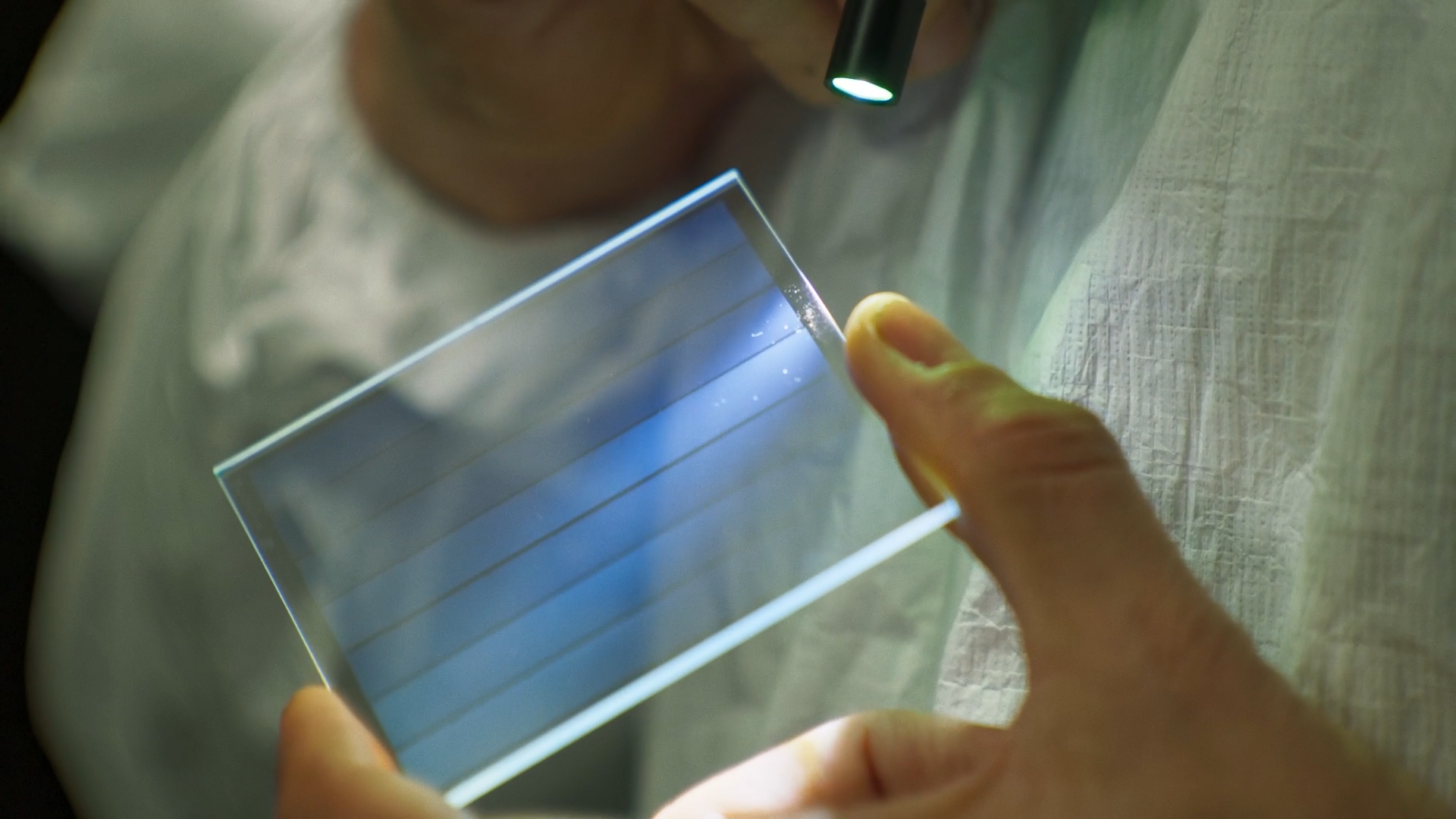Microsoft develops ultra durable glass plates that can store several TBs of data for 10000 years::Project Silica’s coaster-size glass plates can store unaltered data for thousands of years, creating sustainable storage for the world
Of all the stuff I’ve seen in sci fi movies and tv shows, I really didn’t think the computer chips on glowing transparent plates was gonna become reality. What a crazy world this is.
Here, put this weird glowing crystal into the Heart of Gold’s navicom, it contains the location of the long lost planet of Magrathea.
Whoops, sorry, that was my Lincoln Park discography
Four score and seven years ago, in the end it doesn’t even matter
Ahhh Lincoln Park.
The cover band mixing President Abraham Lincolns greatest escapades with the nuwave metal of 2000’s Linkin Park. Featuring the Bed Intruder dude.
I tried so hard, and got so far. But in the end, I still got assassinated.
I was gonna go for, “In the head, I was still assassinated.”
Lincoln Park’s greatest Hit?
oh no, not again!
- A house plant probably
Or a whale.
Oh look, the ground! I wonder if it will be friends with me?
Star Trek predicts another future technology; the isolinear chip.
Add: And the chips used on the original series were opaque, but roughly the same size.
The opacity is probably storage density.
I bet people in the 80’s said stuff like this when music started coming out on digital rainbow mirrors (CDs).
Nope! The futuristic aspect was that they didn’t jam.
“No more cassette players eating my $8 album!? I LOVE LIVING IN THE FUTURE!”
That was more the reaction to Sony mini-discs. Video players using large laser discs had been around for a while.
Mini-discs still feel futuristic for some reason.
I agree, but can’t figure out why. Maybe because it wasn’t wildly adopted?
Every time I watch Johnny Mnemonic and he snaps in that laser disc I think “so cool”… :)
Sony paid a pretty penny for us to think that I bet.
Keanu Reeves also stored his malware on MDs in The Matrix. Most cyberpunk guy alive (also in Cyberpunk 2077).
Isolinear chips have arrived.
Optical communications, optical computers, optical storage.
optical computers
Why not yet?
It’s an active area of research. I guess you’d just say that they haven’t figured it out yet.
I hope it’ll be like those communicators in the expanse, those things look fun.
I want a glass computer that is on a manipulator strapped to my back that way it can float free and I can use both hands, then push a button to have it collapse back along the backside of my ribs.
Pfft just wait till we figure out Xenonite.
Archeologist in 1000 years: "this glass has some interesting etching, must have had some religious significance.
Turns out to be the lewd anthropomorphic creatures glass plate
fertility ritual
Furrility Rituals.*
Maretility Rituals
Just petabytes of porn
Archaeologist in 1005 years: "We have translated the folder names on this glass storage device! The writings within refer to a important man named “Brazzers”, and there is another folder full of his correspondence to his “step sister” and someone named “Milf”.
The Prime Ejaculator
“There is only the true religion of the Void, these heretic artifacts must be destroyed”
“Aliens”
Some of the same technology was actually also used to create windows.
You can have my upvote, but I’m not happy about it
I’m pretty happy about it.
Logs into the SilicaArk long term storage system for the first time.
“Welcome Andy, would you like to use the optimistic theme or the pessimistic theme?”
Chooses optimistic. Types in command to show storage capacity.
“The glass is half full.”
Woooow
They’re called isolinear chips.

Is that from Star Trek?
Yup
I have pendrives that look almost like that.
Failed to load image
Imagine long flat jolly ranchers…
I can see it.
I can see it, but I have no idea how to post images in comments.
deleted by creator
Didn’t someone make a holographic cube some ten or so years ago with the same promises.
I never get excited by this stuff. If I see it in Best Buy, then I’ll believe it.
Many people have made such devices I think. There’s probably a guy somewhere with a shelf full of them.
Yeah, also writing 10 GB of data to rolls of sticky tape in the late 90s. It can be done, but it’s not practical.
deleted by creator
Awesome. So Microsoft, does this mean I’ll finally get access to the other 3TB of OneDrive storage that I pay for on my family plan? Or do I still have to create random accounts that would simulate other family members in order to use it?
Sure, if you don’t mind storing stuff and then never reading them again.
To be fair, I have a lot of stuff I am storing that I have no realistic reason to ever need or want to read again as it is.
Never read again? These can’t be modified, but they can be read. After all, it’d be pretty useless to store data on a medium than can never be read.
This plan it built under the assumption that more people will be using one drive. The value of scrapped data isn’t just quantity, but number of people.
This is also the 10,000th time I’ve heard about this so there is that…
I almost literally yawned reading the title. “Journalists” regurgitating things they don’t understand and hyping them everytime like it’s the breakthrough of the century. I feel it waters down actual breakthroughs and makes people immune or at least apathetic to these stories because it’s the same thing over and over.
Ah, but did you know
THEY DID SURGERY ON A GRAPE
It’s working!
That’s a lot of start menu ads and telemetry code!
The goddamn telemetry code!!! Is ancient!! That’s why it’s so huge and slow
Cats: Challenge accepted.
10,000 TB of cat pics.
OMG :-(
Was it minority report or the matrix that showed humans storing data on glass?
Either way, this is pretty cool.
Minority Report had some glass storage stuff that was fun to see. He would insert a glass slide into the machine.
Thanks! That may have been the case I was thinking of.
Star Trek also has this.
And Star Craft and Stargate. Must be something a lot of sci-fi stuff has.
in The Expanse their ships are somehow powered/controlled by a shelf of things that look like this
I think the blade runner sequel had something like this too.
I don’t remember this anywhere in the matrix
I think you’re thinking of Star Wars. Like episode 2 or something.
Definitely I’m Minority Report as well in several scenes
It was Minority Report, during the sequence when Anderson is going through the footage of the murder in the beginning of the movie. One of the guys puts some video from a nearby computer into a small tablet -size piece of glass and hands it to Anderson who plugs it in and puts the video on the main screen.
We’ve got some pretty good glove mouse things so we’re just kidding the pre-cogs.
In 2001, HAL is disconnected through glass like components.
It seems like it would make for a great replacement for Tape Backups that are currently used for long term storage. They are easy to write to but hard to read from and restore. It’ll probably be a great technology to put backups on especially if it lasts as long as they say. The challenge will probably come in with the specialized reading and writing laser / microscopes being expensive.
According to the article, they’re using their AI cloud service to decode the data, so it’s also likely so computationally expensive to decode that it won’t be practical. Seems more like a gimmick to woo investors that won’t actually ever see real world use, at least not any time soon. I suppose you could make the argument that you can back up data on it now, and hope reading it becomes more practical later, but then it’s more of a supplement to tape backup, rather than a replacement.
using their AI cloud service to decode the data
The hell does that even mean? Is it a model that convinces people it’s decrypting data while taking guesses based on the training set?
My guess is it’s an attempt to build long term a subscription service model behind the idea. No subscription, equals it can’t be read or some contrived bs to leech more money out of users/governments of the encoding/decoding technology.
There is certainly an element of this being PR for Microsoft. But it is worth considering that a huge amount of computing is done in large data centers.
I think this fact could easily jump-start the use of a technology such as this. If it starts out where every large to mid-sized data center has a reader and writer shared among their thousands of customers it certainly would make it more viable.
I would guess the AI service is MS’s way of trying to make sure they control the technology. Hopefully, it eventually can get replaced by a local AI model rather than MS’s proprietary AI.
So I read many times that it can store “several TBs of data” but how many exactly? 2, 3, 5, 10?
Do they know exactly? Is it possible that they write 5 TBs and when they try to read it, they can only read like 3, losing the other 2 TBs?
They’re being so vague with the numbers that I really doubt how mature any of this is. Given some of the examples (photos, music, War & Peace) I’m guessing 3TB or so, but it’s a fluff article, so who knows.
Just out of curiosity, I calculated that the article’s (War and Peace * 875,000) claim would net you less than 1TB of storage space (~973GB), assuming it was GZipped (and ~3x that if not).
The most concrete number we have is from another article (also on an official Microsoft page) that claims it’s upwards of 7TB.
I imagine it would depend on the size of the plate and the degree to which correcting codes are used for redundancy.
I remember when they told us a CD would last for hundreds of years LOL
Right? I had a similar question about this - what happens when it scratches?
Is this what Hal 9000’s memories were stored on?






















